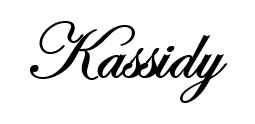
In case you couldn’t already tell from my past posts about primary documents and my ever-expanding letter collection, I find primary sources to be a key to unlocking the past. Luckily, it’s a key that nearly everyone has access to, not just history professors, museum curators, and National Park Service employees. If you’re wanting to add a primary source to your collection that includes information about almost every topic, from political and military movements to housing advertisements and the latest products, I suggest finding a historical newspaper to start reading! (Hint: If you can’t/don’t want to add a newspaper to your collection, you can always become a subscriber of Newspapers.com–read my review here.)
I have three historic newspapers in my collection, dating from 1683, 1820, and 1862. With even a small newspaper archive, however, I’ve deeply broadened my knowledge about the past through these primary sources. One of my favorite aspects of these newspapers are the advertisements, as I learn more about the inventions that existed in previous eras (some of these inventions aren’t really that different from today!). Ready to read some interesting advertisements I’ve found while perusing my 1862 newspaper? Then keep scrolling!

Advertisements from the April 17, 1862, New York Daily Tribune

My April 17, 1862, New York Daily Tribune includes multiple pages of advertisements. I found several of the advertisements above fascinating. Up top, “Knox’s” has an advertisement for hats, noting that “people in war times” can’t afford an expensive hat, which he understands. That’s why Knox’s is offering up “a SPRING HAT of unequaled excellence,” for those who desire “elegance, comfort, and durability.”
In Victorian Era America, gone were the days of quill and ink! In New York, they were offering up a “reliable” gold pen for sale, which readers are informed is “vastly cheaper” than pens made of steel. Certainly, the Victorian Era ushered in more comforts for consumers, even down to the sort of writing utensils that were available.
The inventions of sewing machines changed the course of history. If you’re wondering why, there’s a pretty simple answer. The advent of the sewing machine allowed clothing to be mass produced, giving rise to factories in larger cities and reducing the need for women to make their own clothing (although many impoverished females took jobs in those factories). For women, not having to make clothing for themselves and their families gave them more free time in which they could shop, dine, and enjoy other amusements. In this 1862 paper, “The Grover & Baker Sewing-Machine” is offered for sale, and the seller claims it is “the best.” Listed in the above newspaper clipping is an advertisement for a different sewing machine, though, this one “The Original Howe Sewing-Machines.”
When you’re reading this 1862 newspaper, it quickly becomes apparent that the country was at war. And advertisers weren’t shy of mentioning it frequently in their ads! Supposedly, Harnden’s Express is willing to ship packages for half their normal price, as long as the items are heading to Union troops. Harnden’s claims they’ll even ship packages “to all points occupied by Union Troops.”
Also available to soldiers were “Trusses, Supporters Military Shoulder-Braces and Abdominal Supporters combined.” It appears these were medical devices that would offer relief for certain ailments or “deformities.” For female shoppers, the advertisement mentions that a female attendant was there to help.
The Tribune Almanac was advertised for sale, too! These historical advertisements show how much prices have changed since the 1860s. For example, the Almanac was just 13 cents for one copy, or $8 for 100 copies. If that seems like an incredibly cheap rate, do remember that inflation affects prices. Using an inflation calculator, I learned that $8 in 1862 equates to about $234 in today’s money. That’s a $226 difference after just over 150+ years of inflation!
TIP: You can go to this inflation calculator to figure out inflation rates for a slew of historical years, from 1635 all the way up to modern times.


Ever wondered if the ailments we face today existed in the 1860s? Absolutely! On the newspaper clipping above, there are mentions of ringworm, problems with eyes, “scaly eruptions on the skin,” boils, fever sores, running ears, and more. Plus, even though Civil Ware-era photos often reveal teens and young adults with smooth complexions, perhaps the black and white images acted as a sort of “cover up.” In fact, the newspaper says those with “pimples on the face” should seek the “perfect cure.” In the Victorian Era, these “perfect cures” were often tonics, some of which were laced with addictive drugs and/or alcohol in an attempt to ease customers’ pains, which led to a rise of drug and alcohol abuse during the 19th century.
Interestingly, there are also details about “A Grand Double Number of Frank Leslie’s Illustrated Newspaper,” which was slated to contain information about the Battle of Pittsburg Landing, now better known as the Battle of Shiloh. When this particular edition of the New York Daily Tribune was published, the engagement had only been fought 10 days prior. As such, readers were interested in viewing sketched “graphic scenes” from the battle. Keep in mind that the Battle of Shiloh–with over 20,000 casualties–was a shock to many Americans who thought the Civil War would end quickly. The battle revealed a glimpse into the brutality and bloodshed the Civil War would produce.


Cartes de Visites (CDVs) transformed photography during the Civil War. Now, images of soldiers could be made for a cheaper rate, allowing Civil War soldiers–even those who didn’t come from affluent backgrounds–to have their likeness captured. Johnston Brothers in New York was offering up plain CDVs for $1.50/dozen, allowing soldiers and civilians alike to send their photo to friends and family members. Or consumers could pay $2.50/dozen for a vignette, where the image fades into the background. See the difference between “plain” and “vignette” CDVs below. While both CDVs are attractive, I actually prefer the “plain” option from a collector’s standpoint. Since the image doesn’t fade, I can see the background George Quigg (26 KY Inf., bottom right) was in front of, all the way down to the curtain and kepi.




The first ad for this newspaper clipping is for a bullet proof vest. You know the old saying, “If it’s too good to be true, it probably is”? The same is true for historical advertisements! While the ad boasts the vest as a life saving device, further research into these vests illustrates that they weren’t always “bullet proof.” What’s more, they were uncomfortable for combatants, making them impractical for long marches. Plus, the pricing is unethical by today’s standards. For example, officers are charged more ($9) because of their rank, while privates can snag a vest for less ($7). While the two dollar cost difference might not seem like much–and the overall price itself may not seem that expensive–an inflation calculator shows that the vest was actually priced for over $200. Of course, if the vest had actually worked, that would have been money well spent–too bad the vest wasn’t truly bullet proof.
When you’re looking through Civil War soldier letters, it’s likely that you’ll see mention of care packages. Interestingly, the above newspaper ad shares that Adams Express will ship packages for soldiers for free. The only fee is a “small charge” to “cover the cost of delivery to the Quartermasters of the different regiments.” Nurses can also receive small packages for free, while “heavy articles” are shipped “at the lowest freight rates.” This was an interesting find for me because in a Civil War letter I have in my collection written by John L. Hebron (2nd OH Inf.), he requests that his mother ship packages to him via Adams Express. This ad explains why he chose this particular company–the shipping cost was free! (I mean, who doesn’t love free shipping?)
Also noteworthy is the ad where The Sanitary Commission is requesting contributions. They note that there will “soon be many wounded men,” not to mention that “troops on the southern coast are endangered by the unhealthy season now approaching.” This is a a hint at the widespread diseases, some of which were caused by disease-carrying mosquitoes.
The ad directly beneath The Sanitary Commission’s note is an advertisement for the 102nd Regiment NYSV. The regiment is described as “first class,” with “comfortable and clean barracks.” There’s also a mention of the “Minie rifle,” likely to make the regiment seem well equipped to handle looming fights. The end of the ad is a request that all members of the regiment report themselves for duty, or else they’ll be “treated as deserters.” The notes that the regiment is comfortably situated was a ploy to generate more recruits, as the ad says, “A few more RECRUITS WANTED.”


The Latest Styles: In today’s world where modern is everything, having the latest style can seem like a must-have. The interesting thing about “modern” is that the term is always changing, as is evident by the above 1862 newspaper advertisement. There are several engraved card companies to choose from, including J.H. Johnston & Co. that has the “latest styles” in wedding and visiting cards, not to mention watches, jewelry, silver ware, and plated ware. There’s even an example of wedding cards which illustrates how they’ve changed overtime. While the depicted cards are fancy, they’re quite different from the flashy collages of photos many wedding invitations boast today.


In the city, it wasn’t uncommon for adults to rent housing instead of owning a home. Historical newspapers include details about housing accommodations in the era. The above ad mentions a lady and her 13 year old son who need boarding, as well as a French man who wants a home for his family that, in part, can be paid in French language lessons.
Just below that, under the section for “Houses and Farms Wanted,” an individual is looking for a comfortable house on five to ten acres of land. We can see through historical advertisements not only available housing options, but also that picky homebuyers aren’t a recent advent!


When historians mention “traditional gender roles” for women, that normally denotes staying at home, cooking, cleaning, and rearing children. However, historical advertisements do show that women from the city had a few more opportunities. For example, one lady advertises for French and music lessons, as she is “desirous of obtaining a few pupils.”
Further, it might be true that in rural settings most schoolwork was conducted at home or in a small school. However, for cities and urban areas, there were a slew of options for educational institutions. The above ad includes information on the “Englewood Institute for Young Ladies” out of New Jersey. Reportedly, the school is “beautifully located on the slope of the Palisades” and just 45 minutes from New York City.
Another option is the Fergusonville Academy, a first class school for both boys and girls. The school’s price tag is $130 each year, which is a pretty hefty rate for the time (think nearly $4,000!). Even so, that rate includes board, tuition, books, furnished rooms, and more. Plus, horseback riding and a gymnasium rounded out the amenities. Given the description and the price, this was likely a school catered to New York’s “elite.”


Ever looked at a picture of your grandfather and thought, “Wow! What a beautiful head full of hair!”? When looking through historical advertisements, though, it’s apparent that things aren’t always as they seem. In other words, certain historic images feature men with wigs and toupees!
The above advertisement mentions not only “ornamental hair,” but also hair dye–meaning your ancestor’s locks might have been altered. There’s also a contraption advertised that preserves, beautifies, and forces the hair to grow. The illustrations featured are also interesting, although the contraption doesn’t necessarily look comfortable!


What other fascinating details do historical newspapers offer up? Travel information that provides more insight into trips in the 1800s. The above advertisement includes tons of information about boats and steamers, including their destinations and arrival times.
Notice that historical advertisements employ many of the same marketing tactics we see today. Up top, the steamer purportedly offers “safety, speed, and comfort.” Of course, those are all enticing features and could help make any trip a success.


How might one entertain themselves during their 1862 NYC trip? By visiting Barnum’s American Museum, of course! The historical advertisement mentions a few acts that will take the stage, including the smallest and biggest men alive. There are also “Quaker guns” that were taken from Confederate forces in Virginia that will be on display. Interestingly, Quaker guns are actually wooden, but when crafted to look like cannons can give the appearance of a more fortified position and better equipped army (learn more here).
Apparently, Barnum’s American Museum was striving for a family-friendly atmosphere, as “no profane or obscene language [is] permitted on the stage, or intoxicating drinks on the premises.” Admission was only 25 cents (about $7 in today’s economy), though children under 10 could get in for just 15 cents (around $4.50). That’s not a bad price for a day of family fun!

When you dig back into history–exploring information you wouldn’t normally find in a book–you stand to find tons of fascinating information! Overall, historical newspapers enhance any study of the past, and advertisements offer insight into products and fads of the day. Stay tuned, because next month I’ll share some advertisements from my 1683 and 1820 newspapers!
Keep the History Alive!



